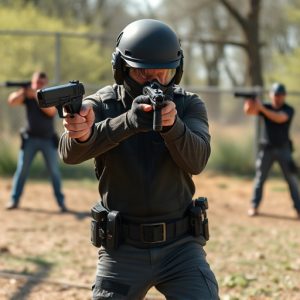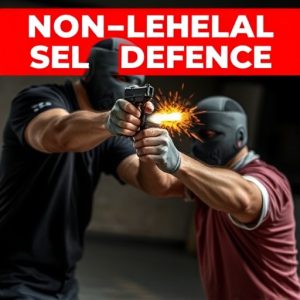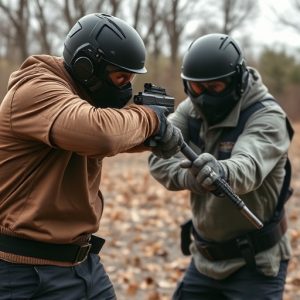Mastering Non-Lethal Weapon Certification: Training, Skills & Battery Care
Obtaining non-lethal weapon certification is crucial for responsible stun gun usage, involving under…….
Obtaining non-lethal weapon certification is crucial for responsible stun gun usage, involving understanding legal requirements and best practices for maintenance, including battery care. Comprehensive training covers battery life management through high-quality batteries, temperature control, cleaning contact points, and adhering to manufacturer guidelines. Regular inspection, proper storage, and testing ensure readiness while staying within legal boundaries.
“In today’s diverse law enforcement landscape, non-lethal weapon training certification is becoming increasingly vital. This comprehensive guide delves into the essential aspects of obtaining and maintaining this critical skill set. From understanding stringent certification requirements to choosing specialized training programs for stun gun operation, we explore key areas.
Mastering essential skills during courses ensures preparedness. Additionally, we emphasize the often-overlooked yet critical aspect of how to maintain stun gun battery life, offering valuable insights for post-certification safety and effectiveness.”
- Understanding Non-Lethal Weapon Certification Requirements
- Choosing the Right Training Programs for Stun Gun Operation
- Essential Skills to Master During Certification Courses
- Maintaining Battery Life: A Critical Aspect of Stun Gun Ownership
- Post-Certification: Staying Prepared and Safe with Non-Lethal Weapons
Understanding Non-Lethal Weapon Certification Requirements
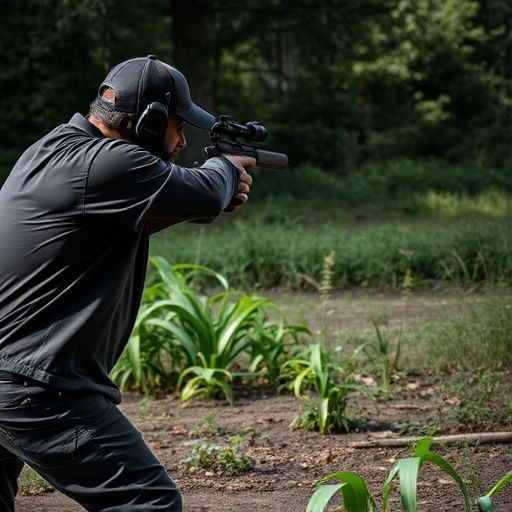
Obtaining a non-lethal weapon certification is a crucial step for individuals seeking to carry and use these devices responsibly. The process typically involves understanding and meeting specific legal requirements set by local, state, or federal authorities. One key aspect of certification is recognizing that different types of non-lethal weapons, such as stun guns, have distinct regulations regarding battery life, maintenance, and usage.
For instance, learning how to maintain a stun gun battery life is essential. Stun guns rely on high-voltage, low-amperage electricity stored in rechargeable batteries. Proper care includes regular charging, avoiding extreme temperatures, and understanding the device’s battery indicator to ensure optimal performance when needed. Certification courses often cover these maintenance practices, along with rules governing the carrying and deployment of non-lethal weapons, ensuring users are equipped with both the tool and knowledge for safe and legal usage.
Choosing the Right Training Programs for Stun Gun Operation

When considering non-lethal weapon training, specifically for stun guns, it’s crucial to select programs that offer comprehensive instruction tailored to your needs. Look for courses that cover not just operation and safety, but also maintenance practices, including how to maintain stun gun battery life. This knowledge is essential, as proper battery care ensures the device functions when needed.
Choose programs that provide hands-on training with real equipment, allowing you to gain practical experience. Additionally, seek out instructors who are certified and have extensive field experience. Their expertise can offer valuable insights into effective deployment strategies and safety protocols. Remember, the right training goes beyond basic operation; it equips individuals to make informed decisions and handle these tools responsibly.
Essential Skills to Master During Certification Courses
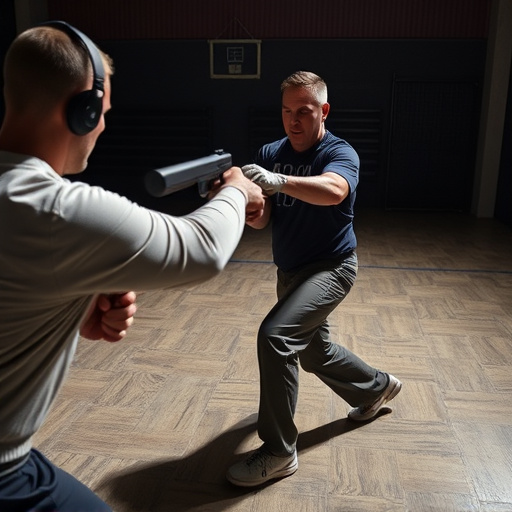
During non-lethal weapon certification courses, aspiring professionals must master a range of essential skills. One critical area is understanding and effectively managing the device’s power source, particularly for stun guns. Trainees learn how to properly charge and maintain the stun gun battery life, ensuring the device is always ready for use when needed. This includes learning about different battery types, charging protocols, and techniques to prolong battery lifespan.
Additionally, certification courses emphasize practical application skills, such as proper handhold and target acquisition. Trainees practice deploying the stun gun under various scenarios, focusing on accuracy and safety. They also gain proficiency in de-escalation techniques, crucial for effectively using non-lethal force while minimizing harm and ensuring public safety.
Maintaining Battery Life: A Critical Aspect of Stun Gun Ownership
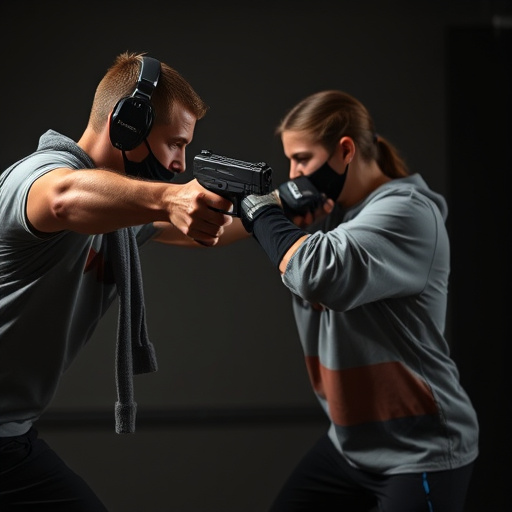
Maintaining proper battery life is a critical component of responsible stun gun ownership. Stun guns rely on robust, high-voltage batteries to deliver a powerful electrical shock when activated. To ensure your stun gun remains reliable and effective, it’s essential to follow best practices for battery care. This includes regularly checking the battery level, keeping the device stored in optimal conditions, and replacing batteries according to the manufacturer’s recommendations.
How to maintain stun gun battery life involves several simple steps. Always use high-quality batteries specifically designed for your stun gun model. Avoid exposing the device to extreme temperatures or direct sunlight, as these can degrade battery performance over time. Additionally, periodically clean the contact points where the battery connects to ensure optimal conductance. Regular attention to these details will help guarantee that your stun gun is ready to use when needed, providing peace of mind and maximum safety.
Post-Certification: Staying Prepared and Safe with Non-Lethal Weapons
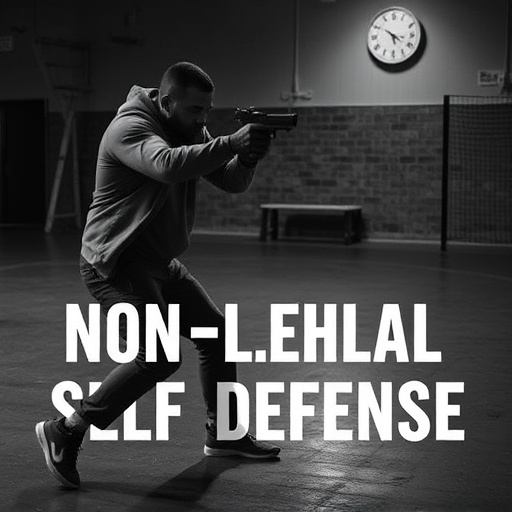
After obtaining your non-lethal weapon certification, staying prepared and safe is paramount. One key aspect is understanding how to maintain your stun gun’s battery life—a critical component ensuring its reliability when needed. Regularly inspect the battery for any signs of damage or corrosion, as these can impact performance and reduce lifespan. Many stun guns use replaceable batteries that can be easily maintained. Follow manufacturer guidelines for charging and storage to optimize battery health. This includes avoiding extreme temperatures and using the recommended chargers to prevent overcharging, which can lead to reduced battery life or even damage.
Additionally, stay vigilant about your weapon’s overall condition. Regularly test the stun gun’s functionality by activating it and ensuring it delivers the intended shock. Keep it in a secure, dedicated case when not in use to protect against accidental activation and environmental damage. Familiarize yourself with local laws and regulations regarding non-lethal weapons to ensure compliance and avoid any legal complications. By adhering to these maintenance practices, you’ll be better equipped to rely on your stun gun should an emergency arise.
Obtaining a non-lethal weapon certification is a significant step towards responsible ownership, empowering individuals to protect themselves and others. By understanding the certification process, choosing suitable training programs, and mastering essential skills, you’ll be well-prepared to use your stun gun effectively. Moreover, prioritizing battery life maintenance ensures your device remains reliable when needed most. Remember that ongoing safety preparation, including regular practice and awareness, is crucial for responsible non-lethal weapon ownership after certification.
